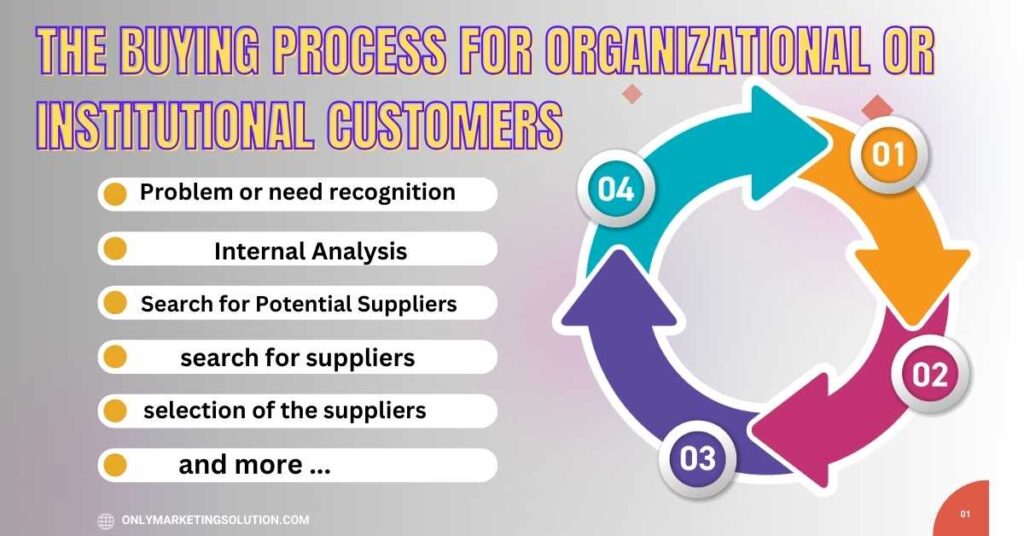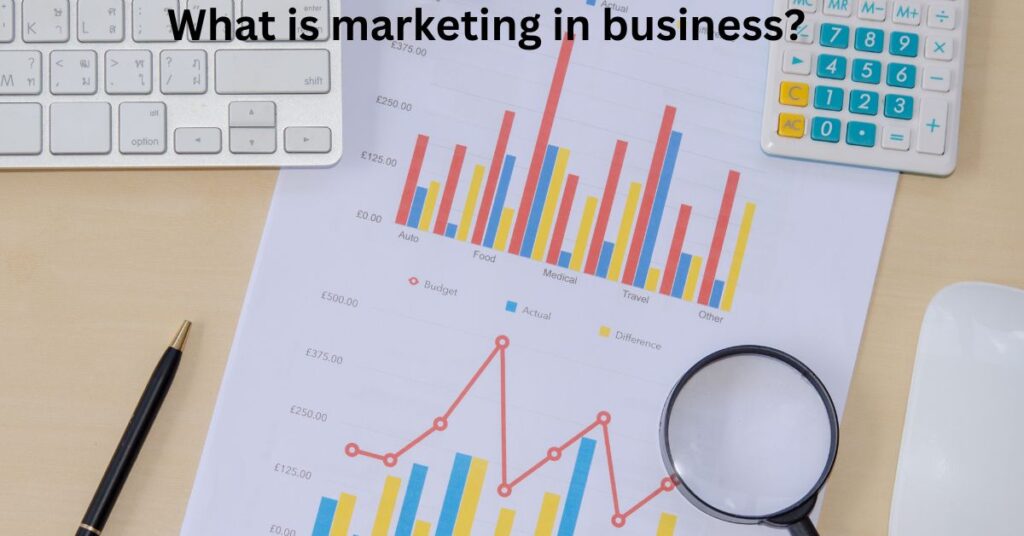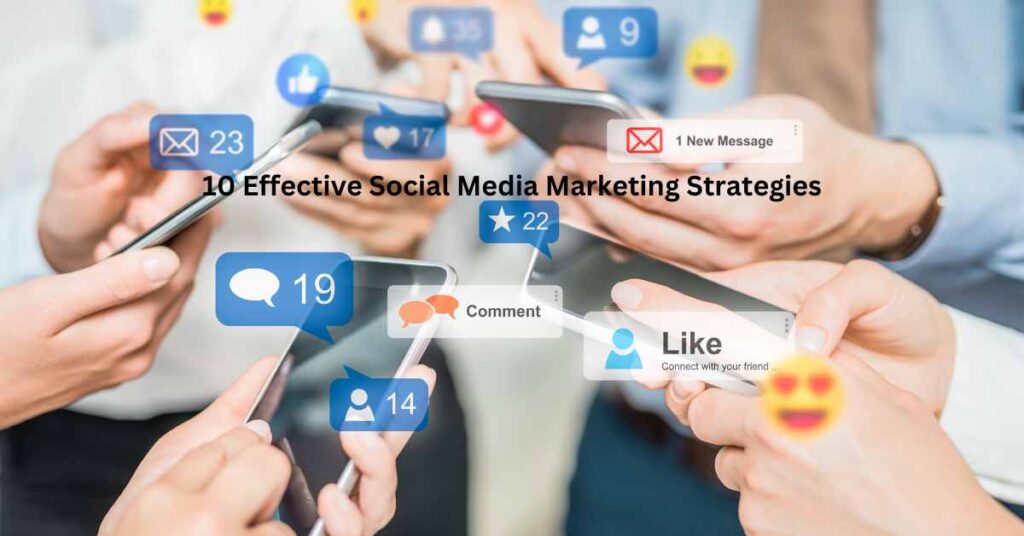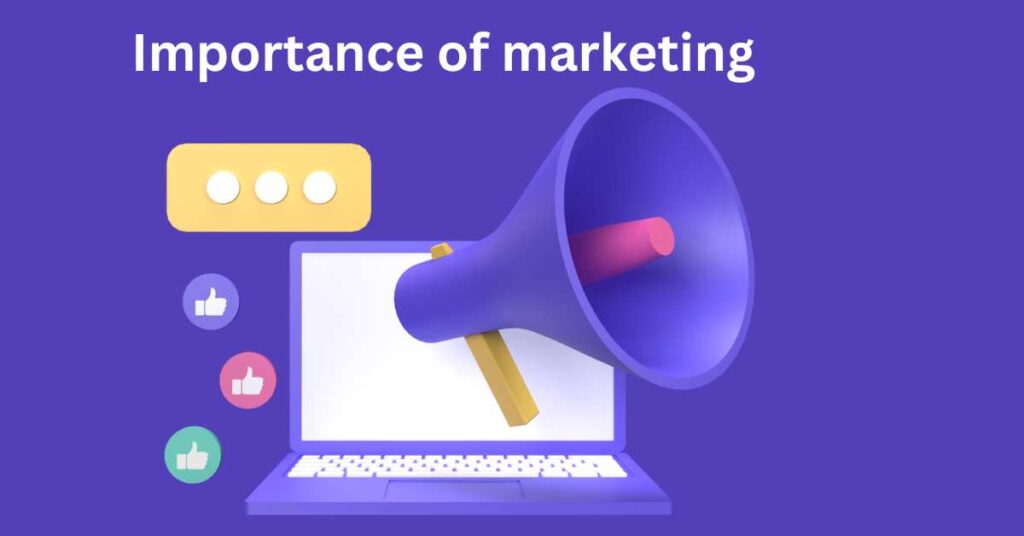Last updated on January 4th, 2024 at 03:26 pm
To buy the goods and services organizational or institutional customers pass through the different processes and stages.
Table of Contents
In the dynamic landscape of B2B commerce, understanding the buying process of organizational or institutional customers is important for businesses and marketers. The organizational buying process contains a structured framework and involves multiple decisions and complex criteria.
The business firm, organization, office, or institution that buys the product for resell or production purposes is called an organizational or institutional customer. Such customers buy the product for direct use.
Generally manufacturing organizations and profit-making organizations are some examples of institutional or organizational customers.
The buying process of organizational or institutional starts with a problem or need recognition and ends with the evaluation of performance.
In this article, we will explore the buying process of organizational or institutional customers. So let’s dive into the topic.
The buying process for organizational or institutional customers
The buying process of organizational or institutional customers passes through 6 stages which are as follows
1. Problem or need recognition

The buying process of organizational or institutional customers begins with the problem or recognition of a need. This is the first step where institutional or organizational customers feel the need for the products or services.
This could be triggered by factors like internal reasons, unsatisfactory performance, lack of cost saving, external environmental reasons, etc. These factors lead to feelings of need and customers start to think about it.
The businesses must stay ahead of the market trends, and competitors to identify potential opportunities for their products or services.
2. Determination of product and buying specification

In the same way, once the need is identified the next step is to determine product and buying specifications. This step involves an internal analysis within the organization.
Similarly, businesses take help from the specialist to determine the product. This process requires collaboration among the various departments of an organization to determine the specific requirements for the product or services.
The decision-makers determine the product quality, brand, price, budget, performance metrics, features, and so on of the product according to need or problem.
3. Search for qualified suppliers

Another step in the organizational or institutional buying process is to search for qualified suppliers. In this step, potential suppliers should be listed who can meet their requirements.
Much extensive research, industry networking, observation, and so on are done in this process. This step involves keeping contact with the suppliers and requesting suppliers to send the proposal about the product.
Organizations may use different sources like advertisements, newspapers, business magazines, and online platforms to search the suppliers.
4. Evaluation of suppliers

After searching for qualified suppliers and once a list of potential suppliers is compiled, the organization sends out requests for proposals or requests for quotations.
In the same way, suppliers respond with detailed proposals including delivery, price, quality, and other relevant information. Then the main process of this stage is to analyze and evaluate proposals submitted by the different suppliers.
Decision makers compare the quality, price, durability, warranty, and so on given by the suppliers. In the same way, this step also includes the comparison of the reputation and goodwill of the suppliers.
5. Selection of the suppliers and purchase order

Similarly, after evaluating the different proposals obtained by the different suppliers it is time for the selection of the suppliers and the purchase order. Decision makers select the supplier who provides the best services.
organization can choose one or more suppliers according to their requirements. In this process, negotiation is done between the organization and suppliers. In the same way, the purchase agreement is made if necessary.
The goal is to select a supplier that aligns with the organization’s requirements. Then organizational or institutional customers give the purchase order with a detailed quotation.
6. Evaluation of performance

The last step in the buying process of organizational or institutional customers is evaluating performance. After the product or service is delivered, the organization conducts a post-purchase evaluation to measure the performance.
Organizations can evaluate the quality of the products supplied by the suppliers. They evaluate the service given by the suppliers. In the same way, In this stage maintenance and after-sales service are evaluated by the organization.
Lastly, after the evaluation of performance, the institutional customers decide whether the supplier is to be changed or not.
You may also like to ask
Those institutions or organizations who buy the product or services for the resell or production purpose are called institutional or organizational customers.
Few buyers, rational buying decisions, buying large quantities, having technical knowledge, complex buying, earlier agreement, direct channel of distribution, etc are the major features of institutional or organizational customers.
Post-purchase evaluation is essential in the organizational buying process because it allows the organization to measure the supplier’s performance, helps to identify the areas for improvement, and also helps to determine the success of the partnership. Similarly, it helps for continuous improvements and helps in building long-term relationships with the suppliers.
Businesses use many strategies to search for potential suppliers like industry networks, online platforms, newspapers, industry reports, and so on.
Organizational or institutional buying involves a complex process due to the many decision-makers makers, goals of the business, specific requirements, and so on. The individual buying process is the frequent which is buying for consumption.
Conclusion
There are mainly 6 steps in the buying process of organizational or institutional customers from the problem or need recognition to the evaluation of the performance. In this competitive landscape of the marketplace, it is necessary to know the process of institutional buying to stand out better from the other competitors.
Using these steps like identifying needs, defining requirements, selecting the right suppliers, and contracts, and evaluating the performance of the product or services supplied by the suppliers are the major processes or steps done by institutional customers.





